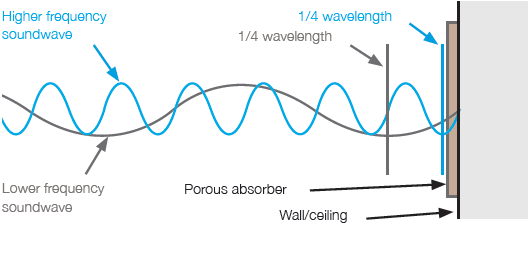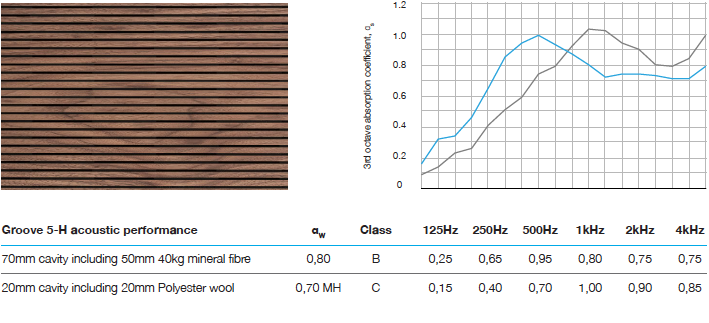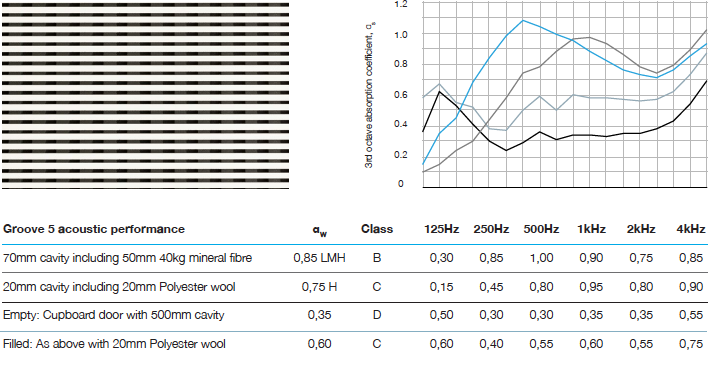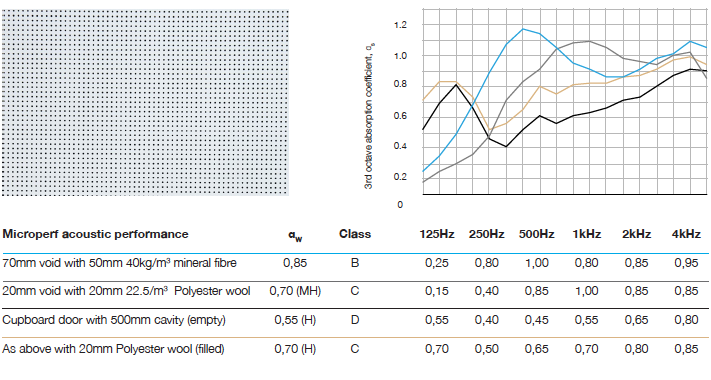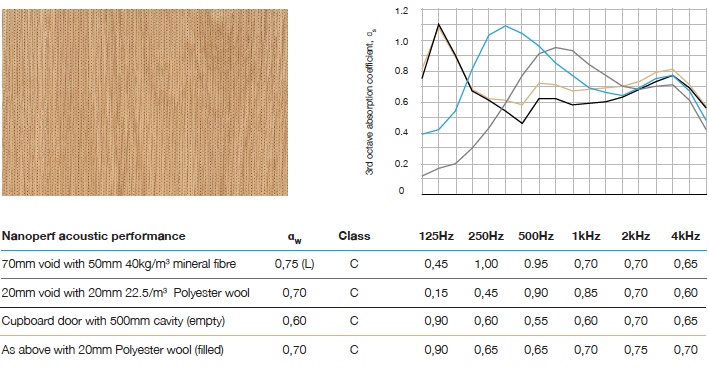Acoustics
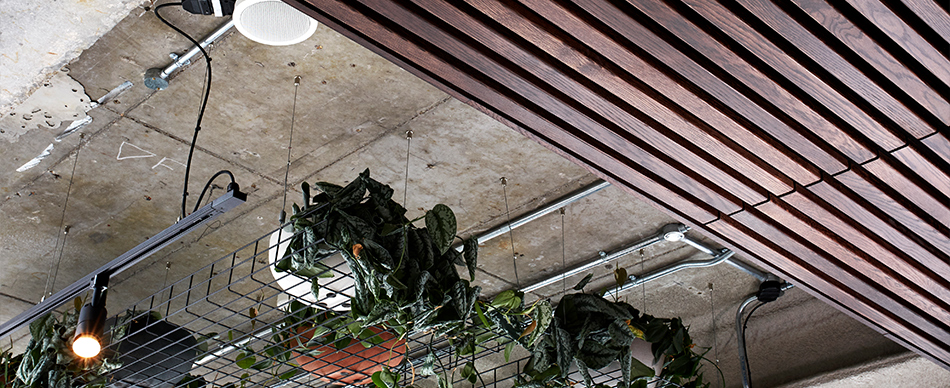
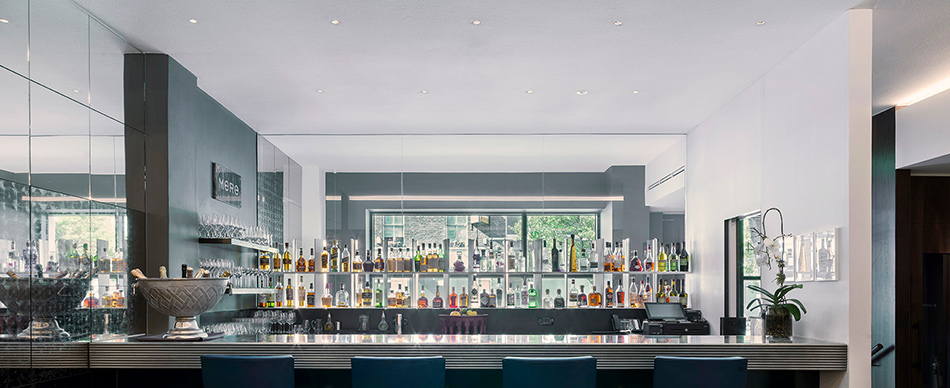
Here you will find test data for our products.
For those looking to expand their knowledge, we include guidance on room
acoustics principles, and theory on how our solutions are designed.
Support
We are here to help with your acoustic requirements. You can expect assistance from a team member with post-graduate level acoustics training.
Phone
+44(0)161 541 2421
Knowledge - Sound absorption in rooms
Reverberation time is one of the key determinants of room acoustic quality, and the factor we try to control with our sound absorbing solutions.
It is the time it takes for a sound to decay by 60dB in a given space. It is measured at individual frequencies, with certain frequency ranges given more importance due to the way we perceive sound, and the frequency spectrum of speech and/or other common sound sources.
Often reverberation time is given as a single figure, which is based on these frequencies, and the function of the room will determine how short this time should be, with classrooms an example of a critical space due to the need for high speech intelligibility.
Fig 1. Reverberation time, t = T60 (s)
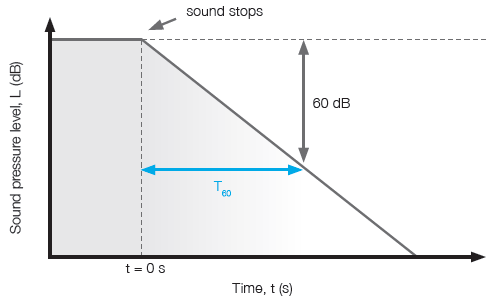
The principal method of reducing reverberant noise is to introduce sound absorbing surfaces, with more effective absorbers and greater coverage leading to lower reverberation times. The amount of sound energy a material will absorb is known as the absorption coefficient, and this again is measured across a frequency spectrum, with a system to give a single figure performance level, based on the most important frequency ranges.
Fig 2. Absorption classification (11654)
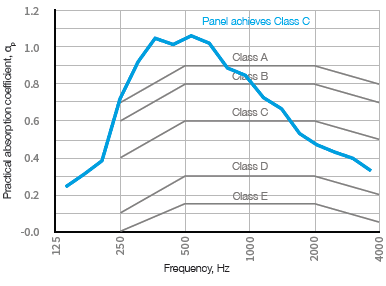
Fig 2 gives an example of measured absorption (the blue line showing a timber acoustic panel with low open-area), and the performance standards which an absorber needs to meet in order to achieve a certain performance classification.
In this case, the absorption meets Class C, but due to the limit on the extent of unfavourable deviations, the absorber may have higher performance than this classification would indicate.
| Weighted absorption, αw | 11654 Class |
|---|---|
| 1.00 - 0.90 | Class A |
| 0.85 - 0.80 | Class B |
| 0.75 - 0.60 | Class C |
| 0.55 - 0.30 | Class D |
| 0.25 - 0.15 | Class E |
If we know the dimensions and the absorption characteristics of the finishes of a room, we can quite accurately predict the reverberation time. Wallace Clement Sabine, an American physicist who took the field of Architectural Acoustics from an art to an empirical science, developed a method of modelling this in the 1890's which is still in use today.
Typically, an acoustic consultant will asses the appropriate reverberation time for a room, and inform the designers that a certain amount of absorption, of a given minimum performance, should be installed to fulfil this.
Usually the simplified performance, i.e. Class C, will be specified, and we can then suggest suitable solutions to meet the criterion, along with the designer's aesthetic and functional requirements.
Please refer to the project-specific acoustic report, where available.
| Room type | Reverberation time Tmf , seconds |
|---|---|
| Lecture halls | ≤ 0.8 small room, ≤ 1.0 large room |
| Classrooms | ≤ 0.6 primary, ≤ 0.8 secondary |
| Sports hall, swimming pool | ≤ 1.5 - 2.0 dependant on size |
| Office | ≤ 1.0 |
| Meeting Room | ≤ 0.8 |
| Library | ≤ 1.0 |
| Restaurant | ≤ 1.0 |
| Corridors, entrance halls | Class C absorption covers ceiling area equivalent. Can be used on walls instead. |
Test Data - timber acoustic panels
P16-C Perforated absorption (354: 2003)
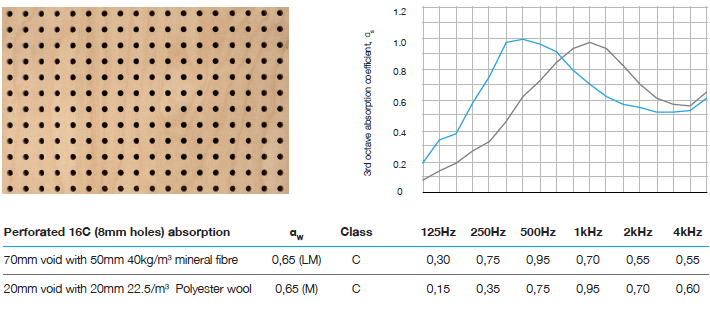
Perforated 16-C (MDF core) datasheet ![]()
Perforated 16-C (Plywood) datasheet ![]()
Our slatted systems offer many customisation options which affect the acoustic performance.
Because of this it isn't usually as simple as providing the test data.
Contact us to discuss your performance requirements.
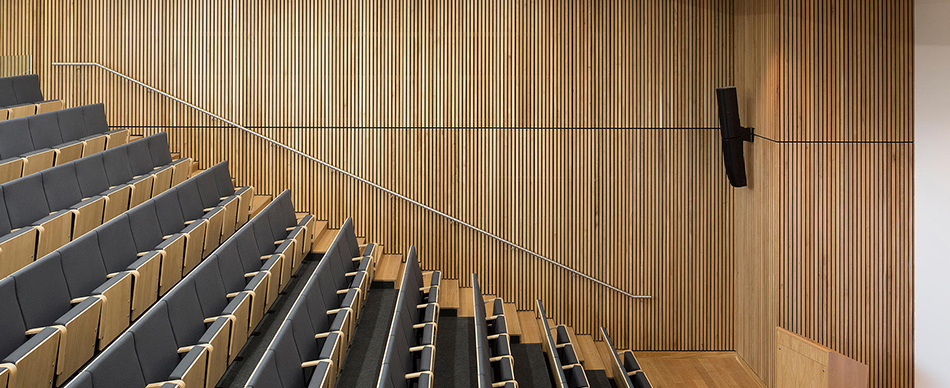
Panels are supplied ready to be mounted on first-fix battens. Any fleece or fabric is already attached to the panel.
The most common scenario is 50mm battens with 50mm Mineral fibre laid between.
For Groove panels, typically 20mm thick, this gives a 70mm total buildup.
Ceilings usually include a suspension system, so please ask us about buildup prior to specifying.
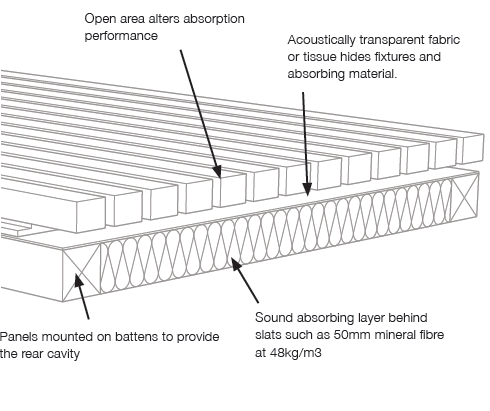
Performance can be improved by:
- increasing the open area (larger or more perforations/gaps between slats)
- adding an effective porous absorber behind the panels
- increasing the thickness of this absorber
- increasing the cavity behind the panels/absorber
- covering larger surfaces in the room (such as the ceiling)
- considering the Helmholtz resonance provided
Open area
Timber acoustic panels require additional consideration to achieve useful absorption. Unlike a bare mineral fibre panel, they also have the hard, reflective surface to the face from the timber itself.
As follows then, reducing the amount of reflective surface, by increasing open area, gives better performance. This is particularly true in the high frequencies, as similar to light, the high frequencies don't go around corners very well, where low frequencies can.
Porous absorber behind
Porous absorbers are used behind our acoustic panels to aid performance. We look for an absorber with high tortuosity (complex structure), high porosity, and good density; such as 60kg/m3. Mineral fibre is ideal here, although more sustainable options are available which also work well.
Helmholtz resonant absorption
There is another absorption mechanism to timber acoustic panels, which can help us to increase the performance, without losing the look and functionality, desirable from timber panels.
This is known as Helmholtz absorption, named after physicist and acoustics pioneer, Hermann von Helmholtz.
Resonant absorption uses mass vibrating against a spring - in this case the air in the perforation or between the slat is the mass, and the absorber behind provides the damping to remove sound energy.
The image below shows the structure of a Nanoperforated panel. Despite not having a high open-area, the Helmholtz absorption provided by the holes leads to a high-performing absorber.
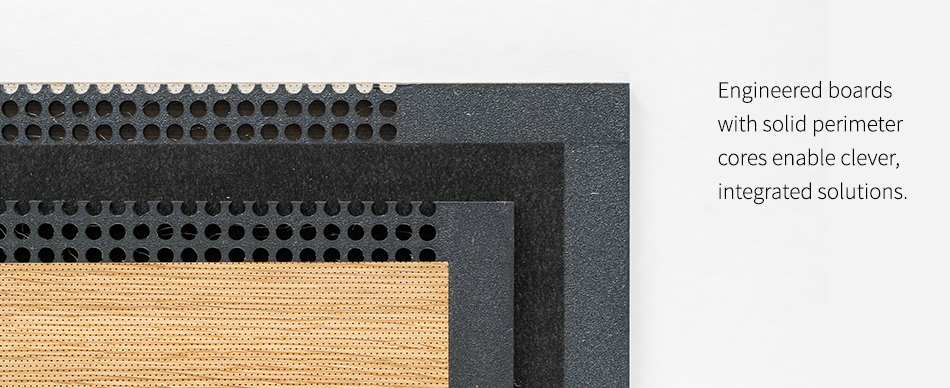
Test Data - Seamless spray and plaster
Acospray DC3 absorption at varying thickness (354: 2003)
Based on direct spray to substrate.

Acospray DC2 absorption at varying thickness (354: 2003)
Based on direct spray to substrate.

Acospray DC2 2.0 absorption at varying thickness (354: 2003)
Based on direct spray to substrate.

The illustration below shows the relationship between absorber thickness and performance, and sound frequency. Maximum air movement is 1/4 (sound) wavelength from a hard surface, and the closer to this point an absorber sits, the higher the performance. Higher frequencies have shorter wavelengths, and so are easier to absorb as you require less thickness in the absorber.
This explains why in order to achieve a Class A absorber, with reasonable absorption in the mid to low frequencies, you usually need a thickness of at least 35mm with our seamless systems.
